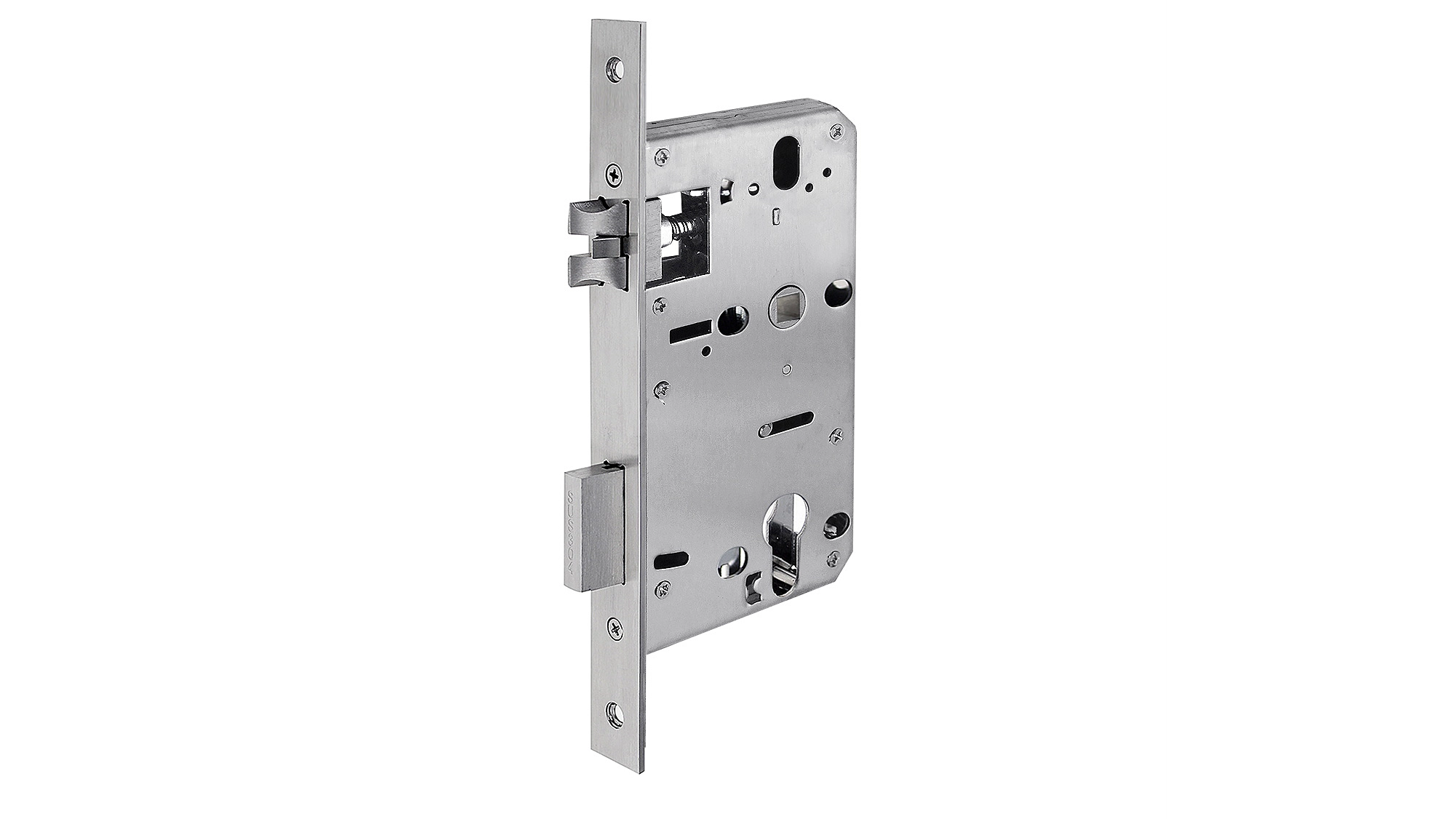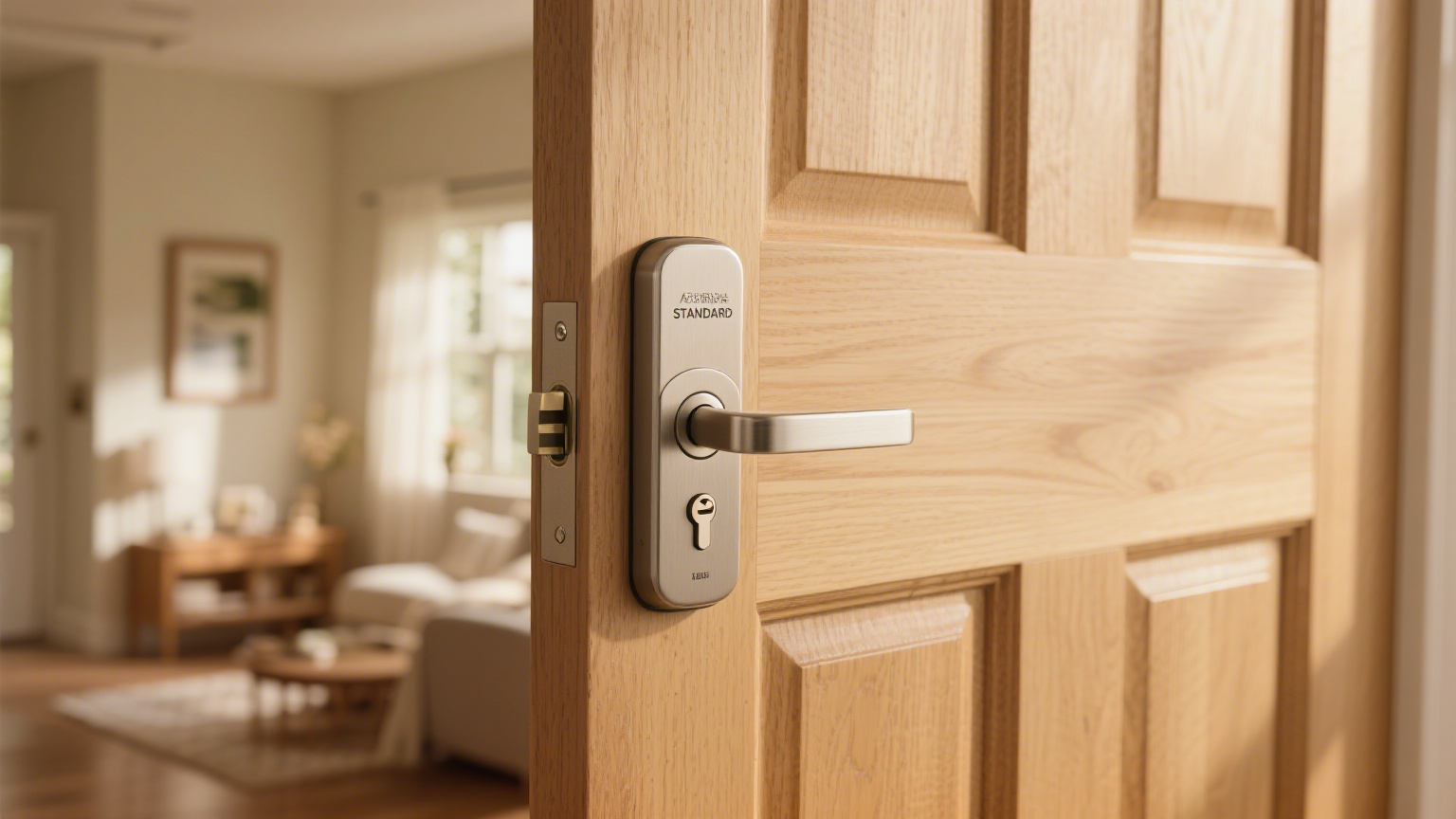Door lock safety standards can seem like alphabet soup. AS, UL, CE—what do these letters actually mean for your security? Understanding these certification systems is crucial whether you're a building manager, security professional, or homeowner looking to make informed decisions about door lock safety and compliance.
Different regions rely on different testing standards to ensure door locks meet safety, durability, and performance requirements. Australian Standards (AS), Underwriters Laboratories (UL), and Conformité Européenne (CE) each represent rigorous testing protocols, but they serve different markets and emphasize different aspects of door lock performance.
This guide breaks down how AS Standards compare to UL and CE certifications for door locks, helping you understand which standards matter for your specific needs and location.
AS Standards for Door Locks
Australian Standards (AS) provide the testing framework for door lock safety and performance in Australia and New Zealand. These standards are developed by Standards Australia in collaboration with industry experts, government agencies, and consumer representatives.
For door locks, the primary AS standards include AS 4145.1 (locksets), AS 4145.2 (deadlocks), and AS 4145.3 (cylinders). These standards evaluate multiple performance criteria including durability, security rating, fire resistance, and operational functionality.
AS Standards door locks undergo comprehensive testing that simulates real-world usage. This includes cycle testing where locks are operated thousands of times, strength testing to resist forced entry, and environmental testing to ensure performance across Australia's diverse climate conditions.
The AS system uses a grading approach from Grade 1 (light commercial) to Grade 3 (heavy commercial), with residential applications typically requiring Grade 1 or Grade 2 certification. This grading helps specifiers choose appropriate locks for their intended use level.

UL Standards: The North American Approach
Underwriters Laboratories (UL) sets the standard for door lock safety in North America. UL 10C covers positive pressure fire tests for door assemblies, while UL 437 focuses specifically on key locks and lock sets.
UL testing emphasizes fire safety performance alongside security and durability. Door locks must demonstrate their ability to maintain integrity during fire conditions, preventing the spread of flames and smoke through door assemblies. This fire-focused approach reflects North American building codes that prioritize life safety in emergency situations.
The UL system includes extensive cycle testing, typically requiring 800,000 to 1,600,000 operational cycles depending on the grade. Strength testing involves applying specified forces to various lock components to ensure they resist tampering and forced entry attempts.
UL Grade 1 represents the highest commercial grade, suitable for high-traffic applications like office buildings and schools. Grade 2 covers moderate commercial use, while Grade 3 serves light commercial and residential applications.
CE Marking: European Conformity Standards
CE marking indicates that door locks conform to European Union safety, health, and environmental requirements. For door locks, the primary standard is EN 12209, which covers mechanically operated locks and latches.
CE requirements focus heavily on environmental performance and user safety. Testing includes corrosion resistance, temperature cycling, and humidity testing to ensure locks perform across Europe's varied climates. The standard also emphasizes accessibility, ensuring locks can be operated by users with different physical capabilities.
European standards place significant weight on durability classification, with locks rated from Class 3 (light use) to Class 7 (severe use). This classification system helps architects and builders select locks appropriate for their specific building type and expected usage patterns.
CE marking also requires comprehensive documentation and traceability. Manufacturers must maintain detailed records of design, testing, and production processes, enabling rapid response to any safety concerns or product recalls.
Key Differences in Testing Approaches
Cycle Testing Variations
AS Standards typically require 200,000 cycles for Grade 2 locks, focusing on realistic usage patterns for Australian commercial buildings. UL standards demand significantly more cycles, with Grade 1 locks requiring up to 1,600,000 cycles to account for high-traffic North American applications.
European standards take a different approach, with EN 12209 requiring cycle testing based on the specific durability class. Class 6 locks undergo 200,000 cycles, while Class 7 locks must complete 1,000,000 cycles, allowing more precise matching of lock performance to actual usage requirements.
Security Testing Focus
AS Standards emphasize practical security testing, including pick resistance, drill resistance, and impact testing that reflects common attack methods used in Australia. The testing protocols consider local crime patterns and typical burglar tools.
UL standards place equal weight on security and fire performance. Security testing includes similar pick and drill resistance measures but adds specific requirements for maintaining lock integrity during fire conditions.
CE standards focus on standardized security testing across all EU member states. EN 12209 includes resistance to unauthorized opening methods but emphasizes consistency of testing procedures rather than adaptation to regional security threats.
Environmental Testing Differences
Australian standards include specific testing for extreme heat, UV exposure, and salt spray corrosion to address the harsh Australian climate. These tests ensure AS Standards door locks perform reliably from tropical Darwin to temperate Melbourne.
UL environmental testing covers North American climate conditions, including freeze-thaw cycling and humidity exposure typical of continental climates. The testing also considers the impact of building heating and cooling systems on lock performance.
European environmental standards address the broadest range of climate conditions, from Mediterranean heat to Scandinavian cold. CE testing includes extensive temperature cycling and humidity testing to ensure performance across all EU member states.
Compliance Requirements by Region
When AS Standards Apply
AS Standards compliance is mandatory for door locks used in commercial buildings throughout Australia and New Zealand. Residential applications may specify AS compliance for insurance or security reasons, though it's not always legally required.
Building codes in major Australian cities reference AS Standards directly. Melbourne's building regulations require AS-compliant locks for fire-rated door assemblies, while Sydney building codes mandate AS certification for certain commercial occupancy types.
UL Requirements in North America
UL listing is often required by North American building codes, particularly for fire-rated door assemblies. Insurance companies frequently require UL-listed locks for commercial properties to maintain coverage.
Many municipalities require UL compliance for specific building types. Schools, hospitals, and high-rise buildings typically must use UL Grade 1 locks to meet local safety requirements.
CE Marking in Europe
CE marking is legally required for door locks sold within the European Union. Products without CE marking cannot be legally placed on the EU market, making compliance essential for manufacturers and importers.
European building codes reference EN standards directly. Germany's building regulations specify EN 12209 compliance for certain applications, while French fire safety codes require CE-marked locks for fire-rated assemblies.

Choosing the Right Standard for Your Needs
Commercial Building Considerations
High-traffic commercial buildings benefit from the rigorous cycle testing required by all three standards. UL Grade 1 locks offer the highest cycle ratings, while AS Grade 3 and CE Class 7 provide comparable durability for demanding applications.
Fire-rated assemblies require careful standard selection. UL standards provide the most comprehensive fire testing, making them suitable for buildings with strict fire safety requirements. AS and CE standards include fire performance testing but may not meet all North American fire code requirements.
Residential Applications
Residential users have more flexibility in standard selection. AS Standards door locks provide excellent security and durability for Australian homes, while UL Grade 2 or Grade 3 locks suit North American residential needs.
European homeowners should prioritize CE-marked locks to ensure compliance and warranty coverage. EN 12209 Class 4 or Class 5 locks typically provide appropriate performance for residential applications.
International Projects
Projects spanning multiple countries require careful standard consideration. Some manufacturers produce locks certified to multiple standards, providing flexibility for international construction projects.
Consider regional servicing and warranty support when choosing standards. AS-certified locks may have limited service support in North America, while UL-listed products might lack local support in Australia.
Making Informed Door Lock Decisions
Understanding AS Standards compared to UL and CE requirements helps you select door locks that provide appropriate performance, compliance, and value. Each standard system reflects the specific needs and priorities of its region while maintaining rigorous testing requirements.
AS Standards door locks excel in Australian conditions with testing tailored to local climate and security needs. UL standards provide comprehensive fire safety performance for North American buildings. CE marking ensures broad European compatibility with emphasis on environmental performance and accessibility.
Choose the standard that aligns with your location, building requirements, and performance expectations. When in doubt, consult with local building officials or security professionals who understand regional compliance requirements and can guide your selection process.
AS Standards Door Locks
As-certified locks
As certified commercial locks
English
العربية
Français
Русский
Español
Português
Deutsch
italiano
日本語
한국어
Nederlands
Tiếng Việt
ไทย
Polski
Türkçe
አማርኛ
ພາສາລາວ
ភាសាខ្មែរ
Bahasa Melayu
ဗမာစာ
தமிழ்
Filipino
Bahasa Indonesia
magyar
Română
Čeština
Монгол
қазақ
Српски
हिन्दी
فارسی
Kiswahili
Slovenčina
Slovenščina
Norsk
Svenska
українська
Ελληνικά
Suomi
Հայերեն
עברית
Latine
Dansk
اردو
Shqip
বাংলা
Hrvatski
Afrikaans
Gaeilge
Eesti keel
Māori
සිංහල
नेपाली
Oʻzbekcha
latviešu
অসমীয়া
Aymara
Azərbaycan dili
Bamanankan
Euskara
Беларуская мова
भोजपुरी
Bosanski
Български
Català
Cebuano
Corsu
ދިވެހި
डोग्रिड ने दी
Esperanto
Eʋegbe
Frysk
Galego
ქართული
guarani
ગુજરાતી
Kreyòl ayisyen
Hausa
ʻŌlelo Hawaiʻi
Hmoob
íslenska
Igbo
Ilocano
Basa Jawa
ಕನ್ನಡ
Kinyarwanda
गोंगेन हें नांव
Krio we dɛn kɔl Krio
Kurdî
Kurdî
Кыргызча
Lingala
Lietuvių
Oluganda
Lëtzebuergesch
Македонски
मैथिली
Malagasy
മലയാളം
Malti
मराठी
ꯃꯦꯇꯥꯏ (ꯃꯅꯤꯄꯨꯔꯤ) ꯴.
Mizo tawng
Chichewa
ଓଡ଼ିଆ
Afaan Oromoo
پښتو
ਪੰਜਾਬੀ
Runasimi
Gagana Samoa
संस्कृत
Gaelo Albannach
Sepeti
Sesotho
chiShona
سنڌي
Soomaali
Basa Sunda
Wikang Tagalog
Тоҷикӣ
Татарча
తెలుగు
ትግንያውያን
Xitsonga
Türkmençe
संस्कृत
ئۇيغۇرچە
Cymraeg
isiXhosa
ייִדיש
Yorùbá
isiZulu







































